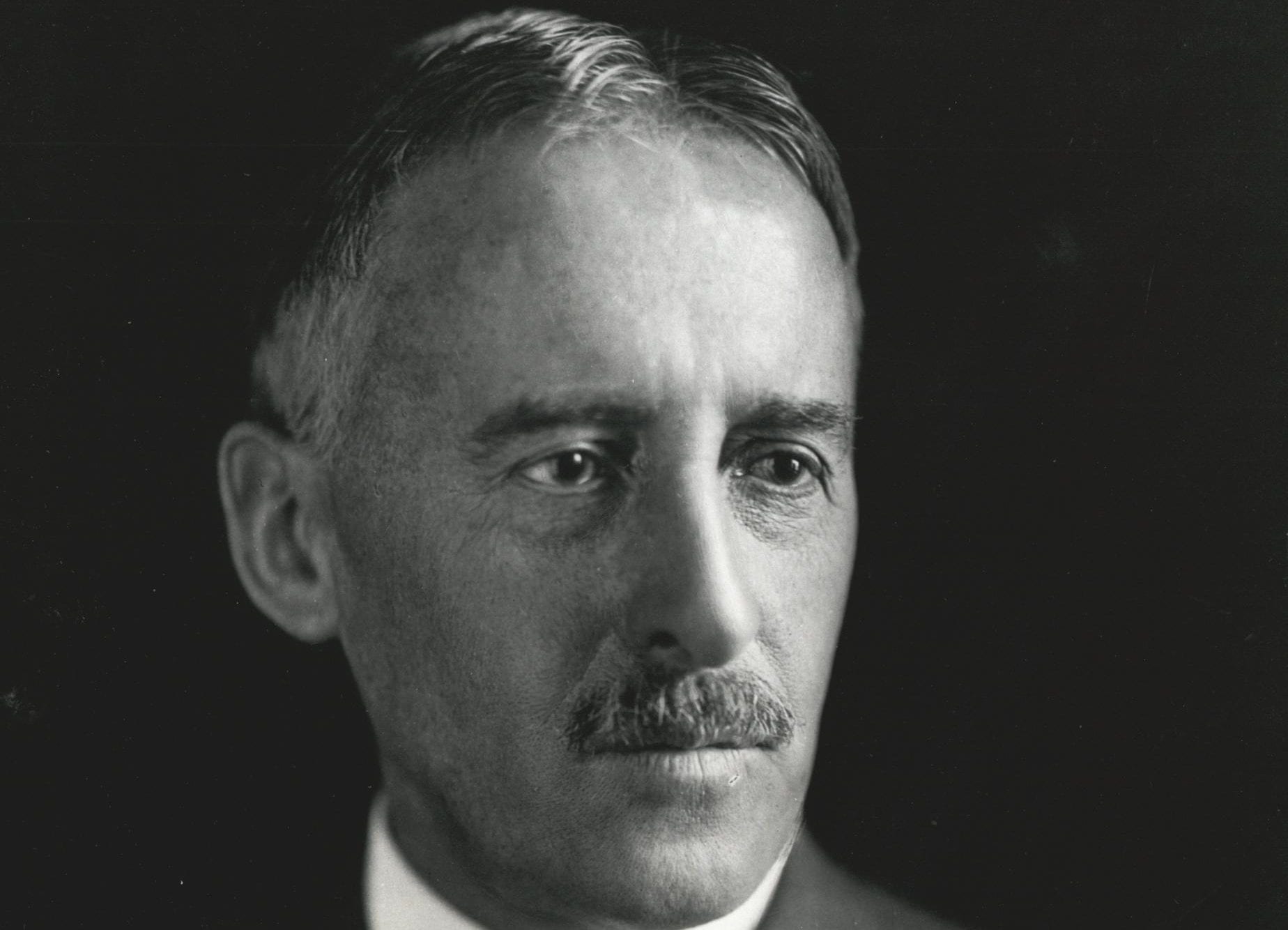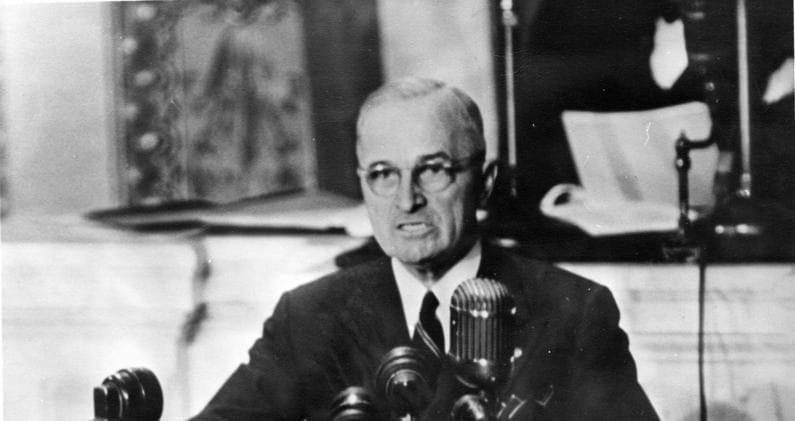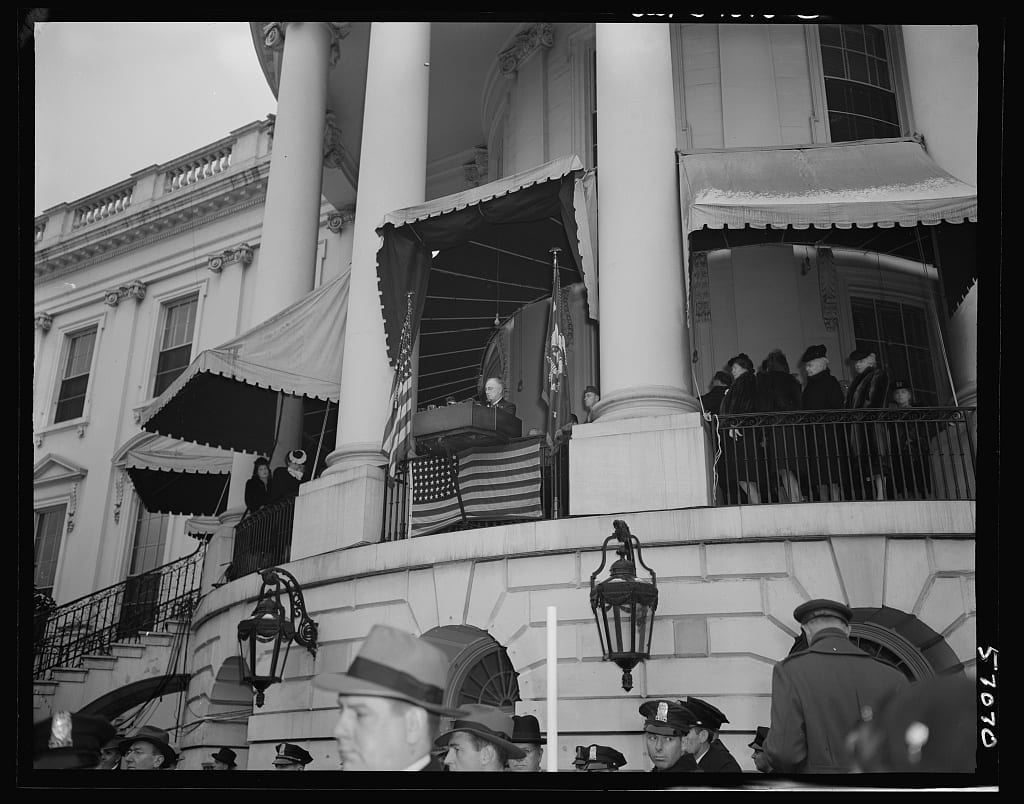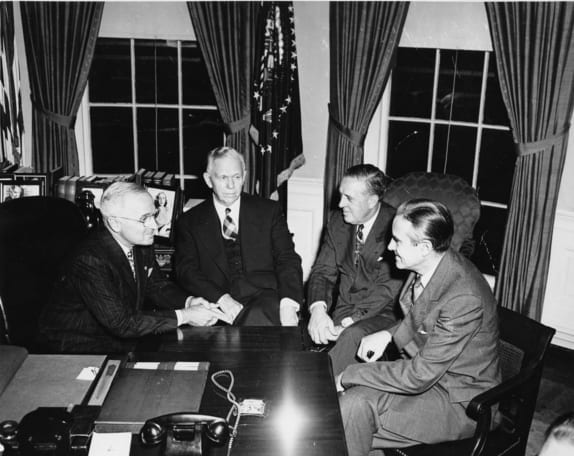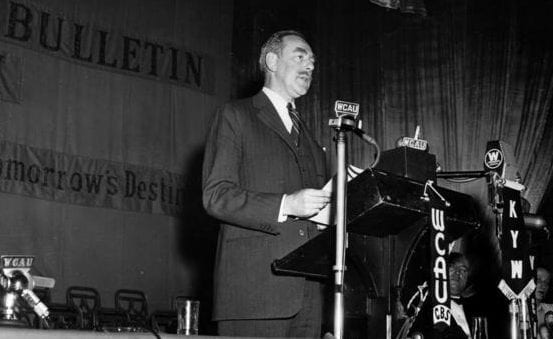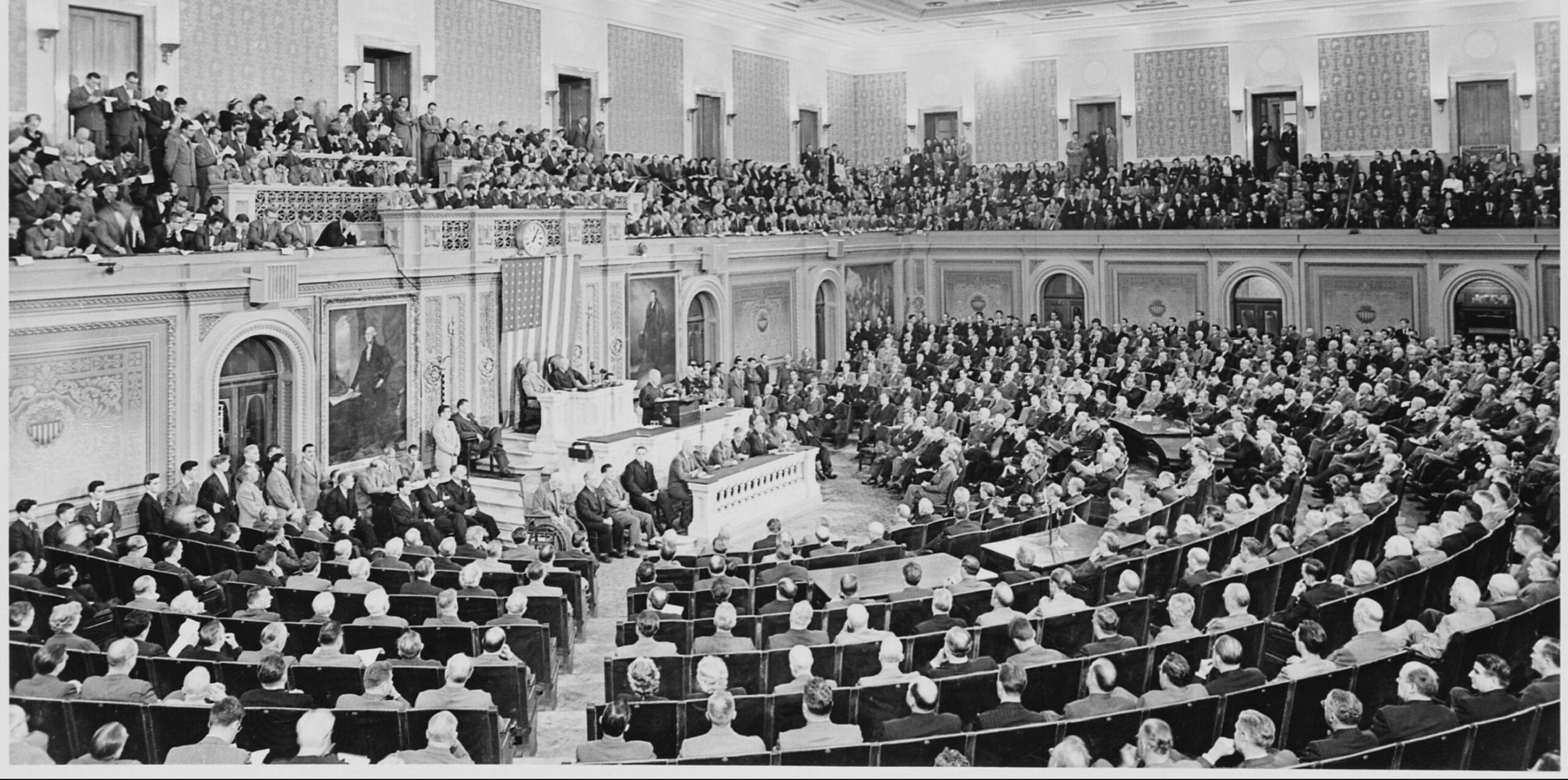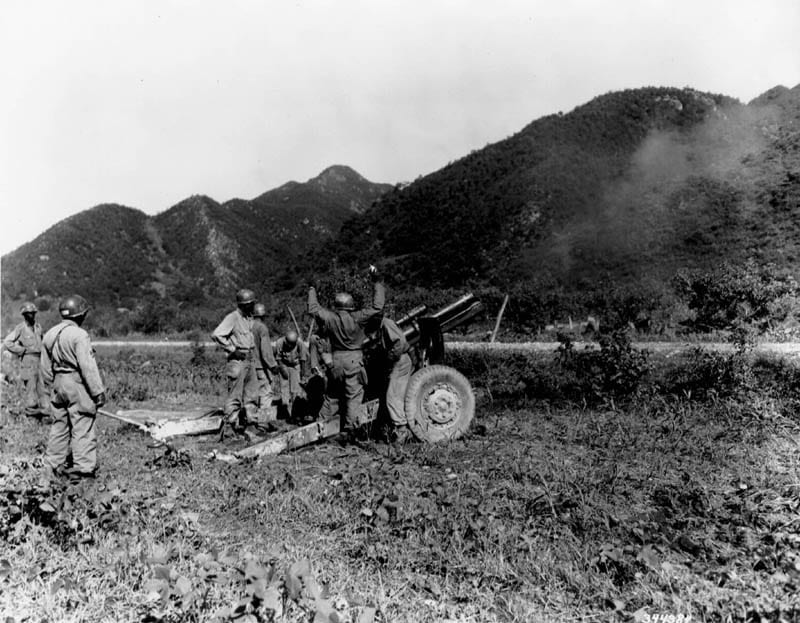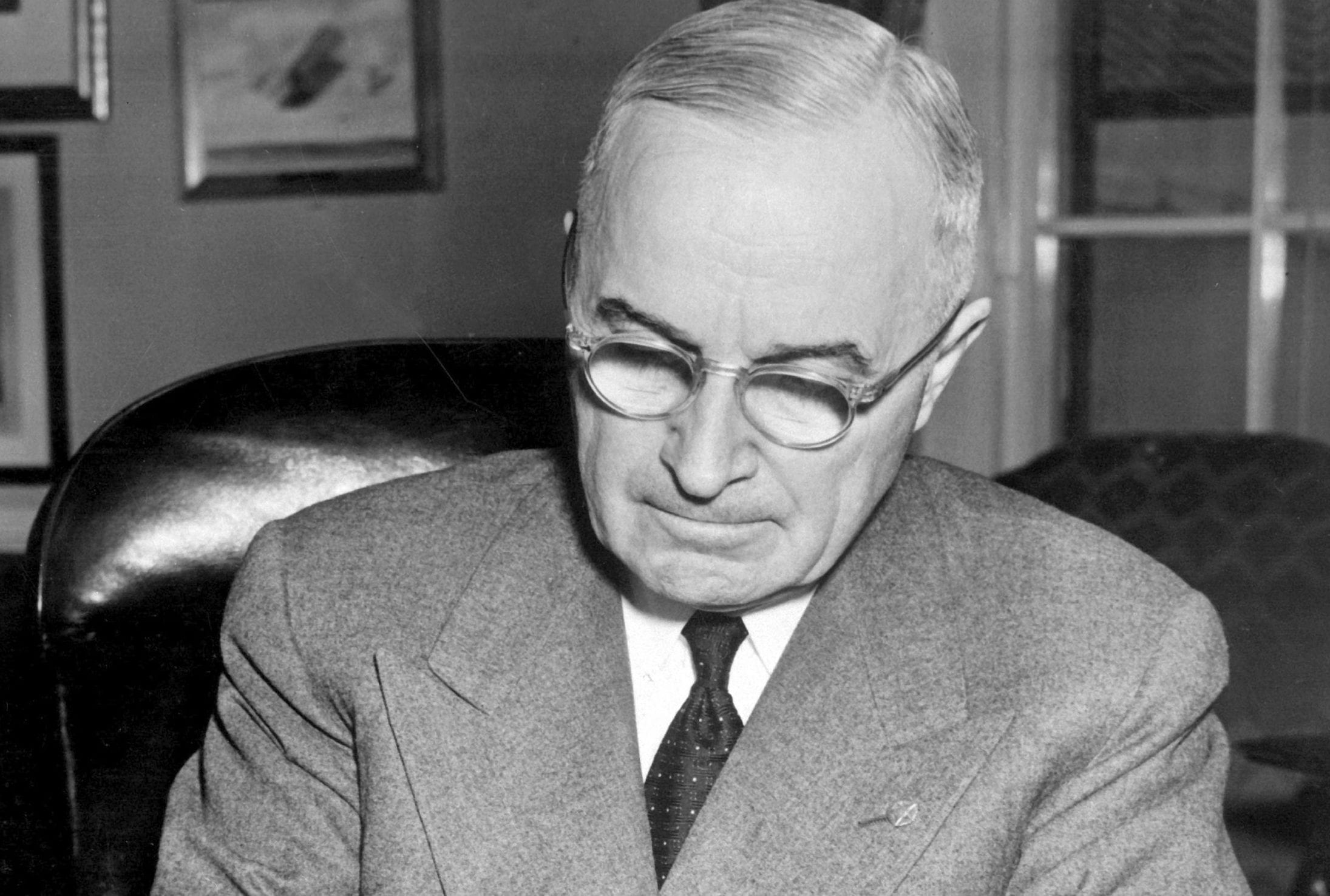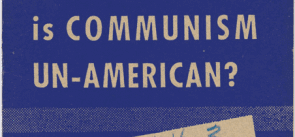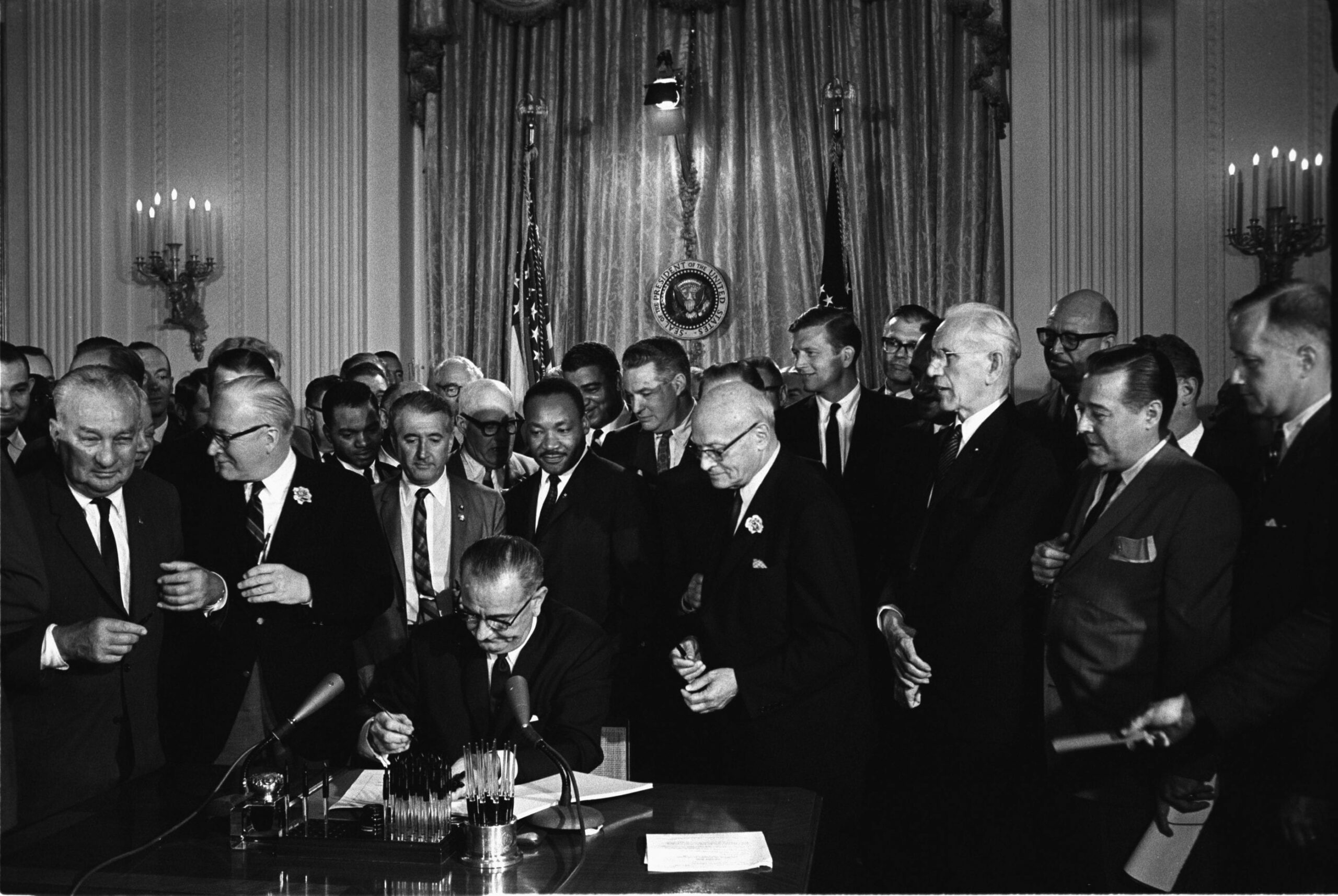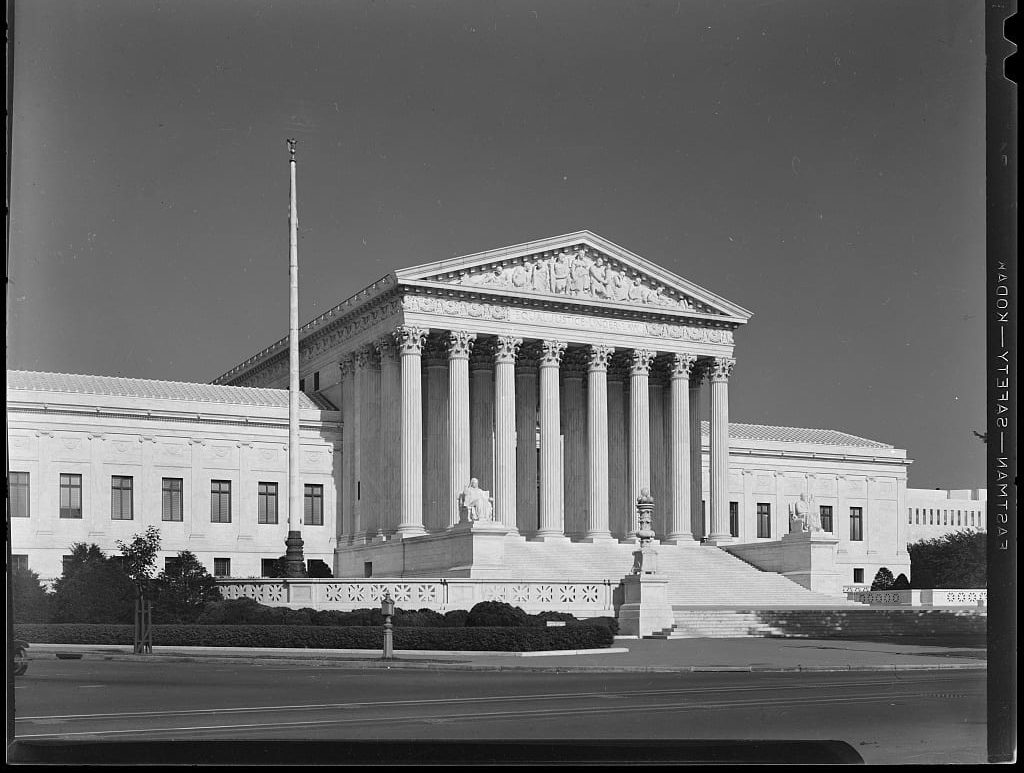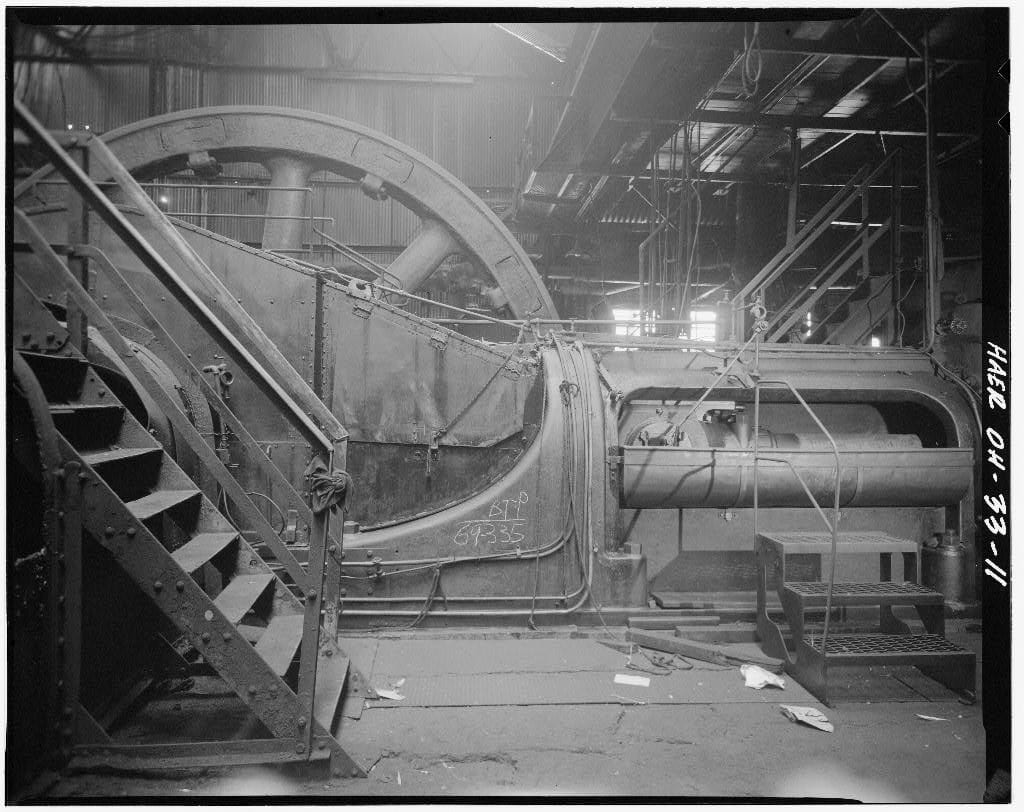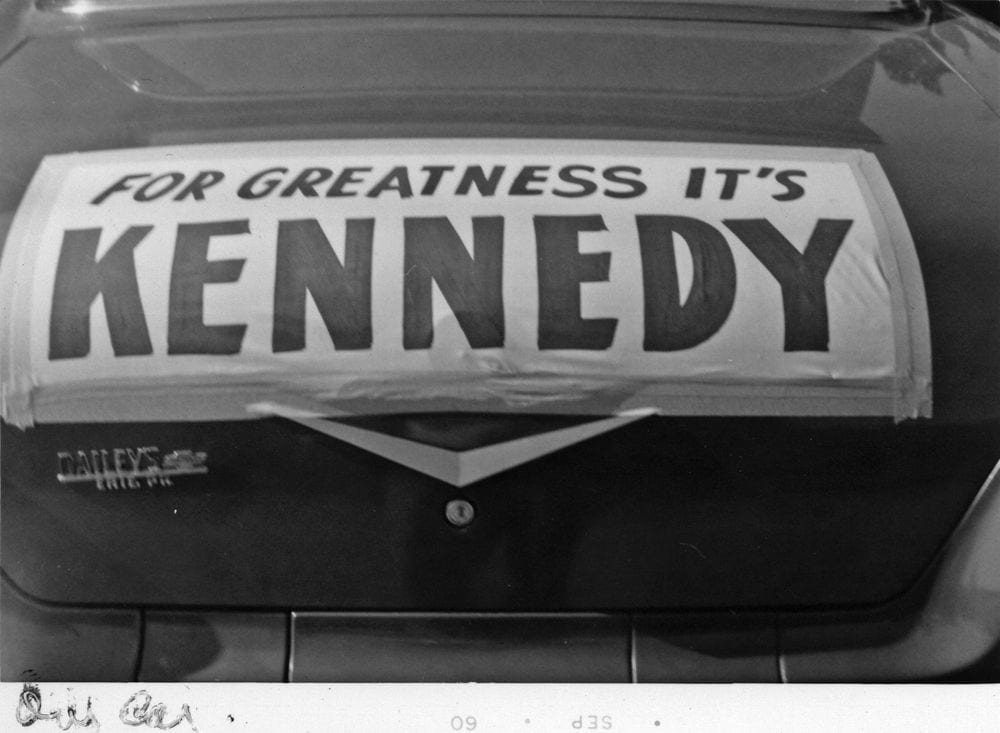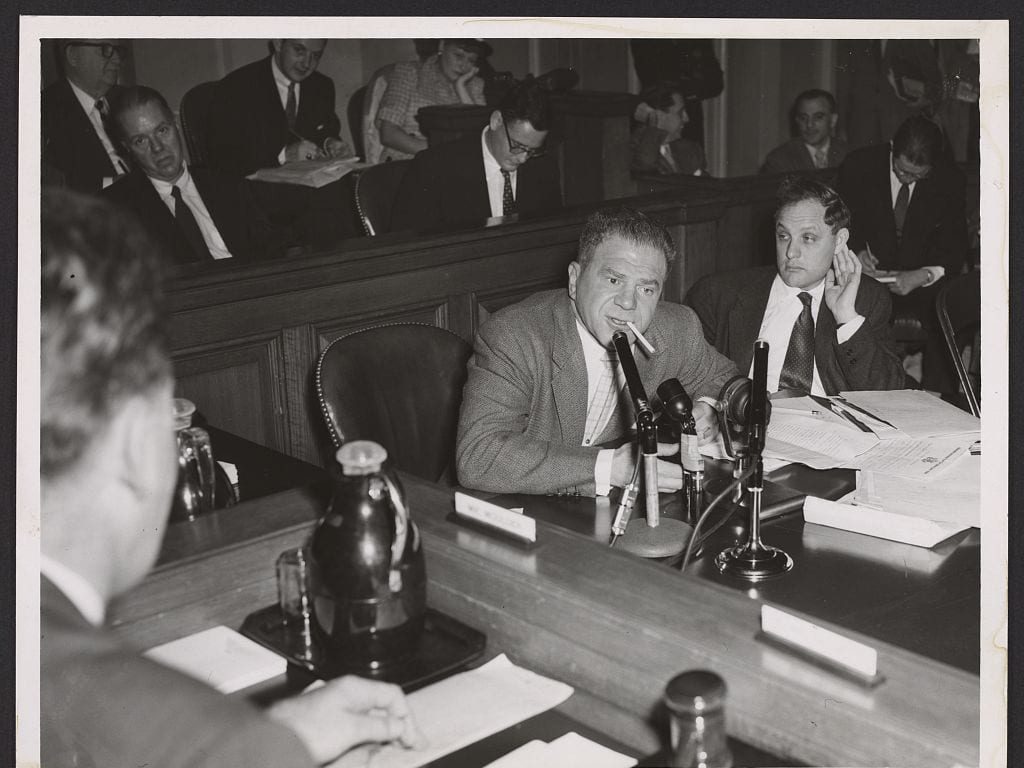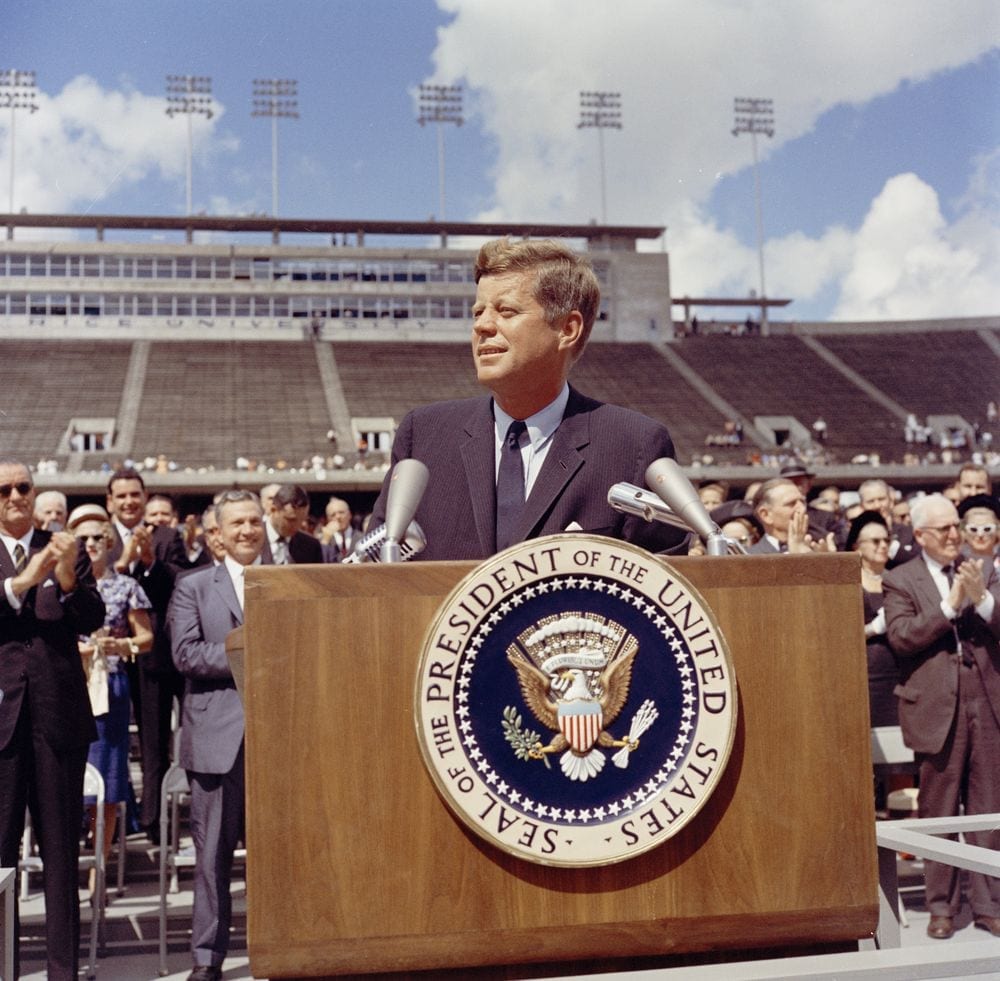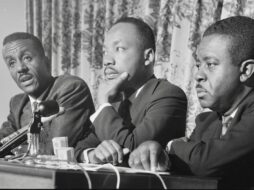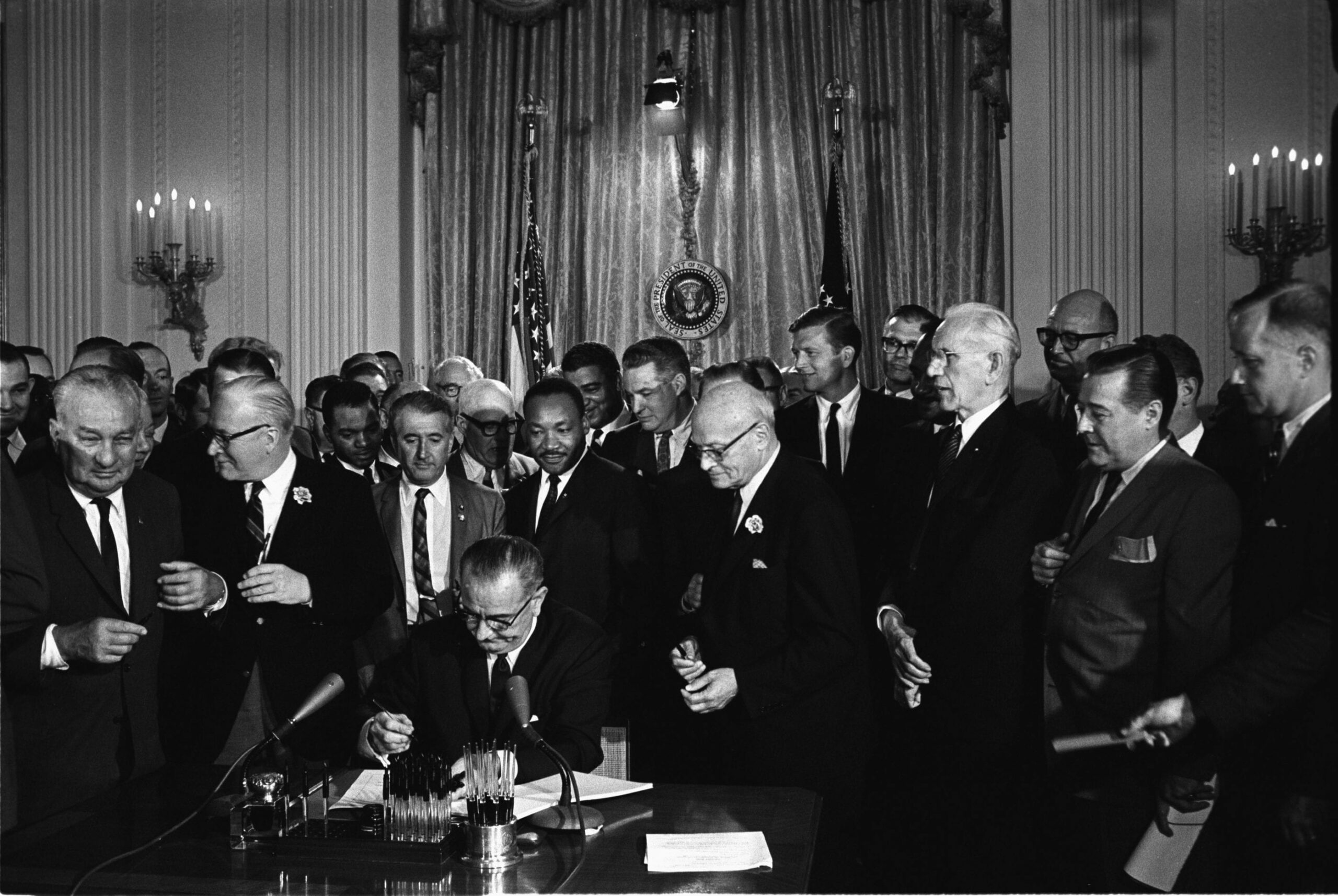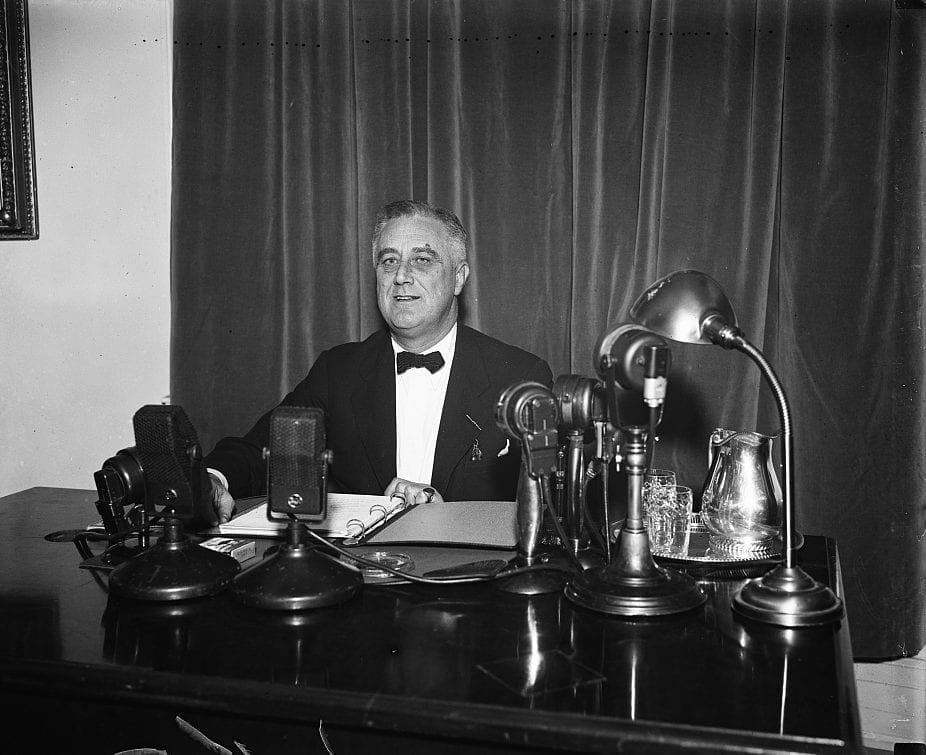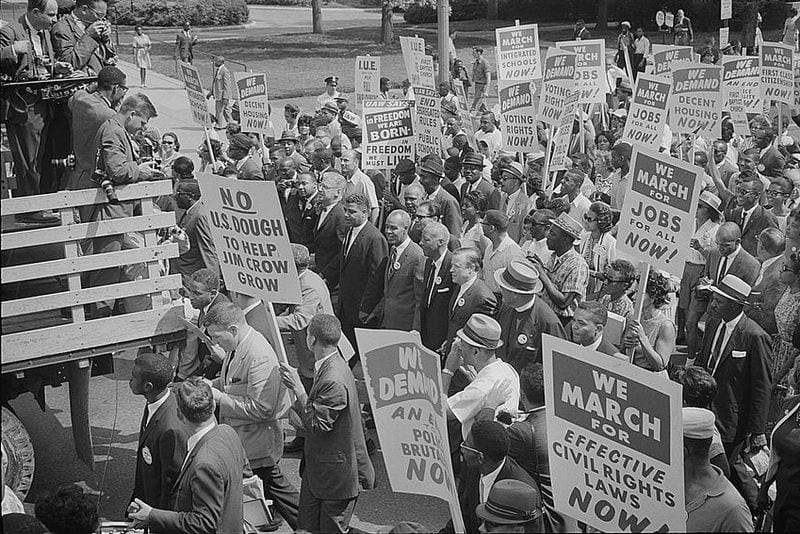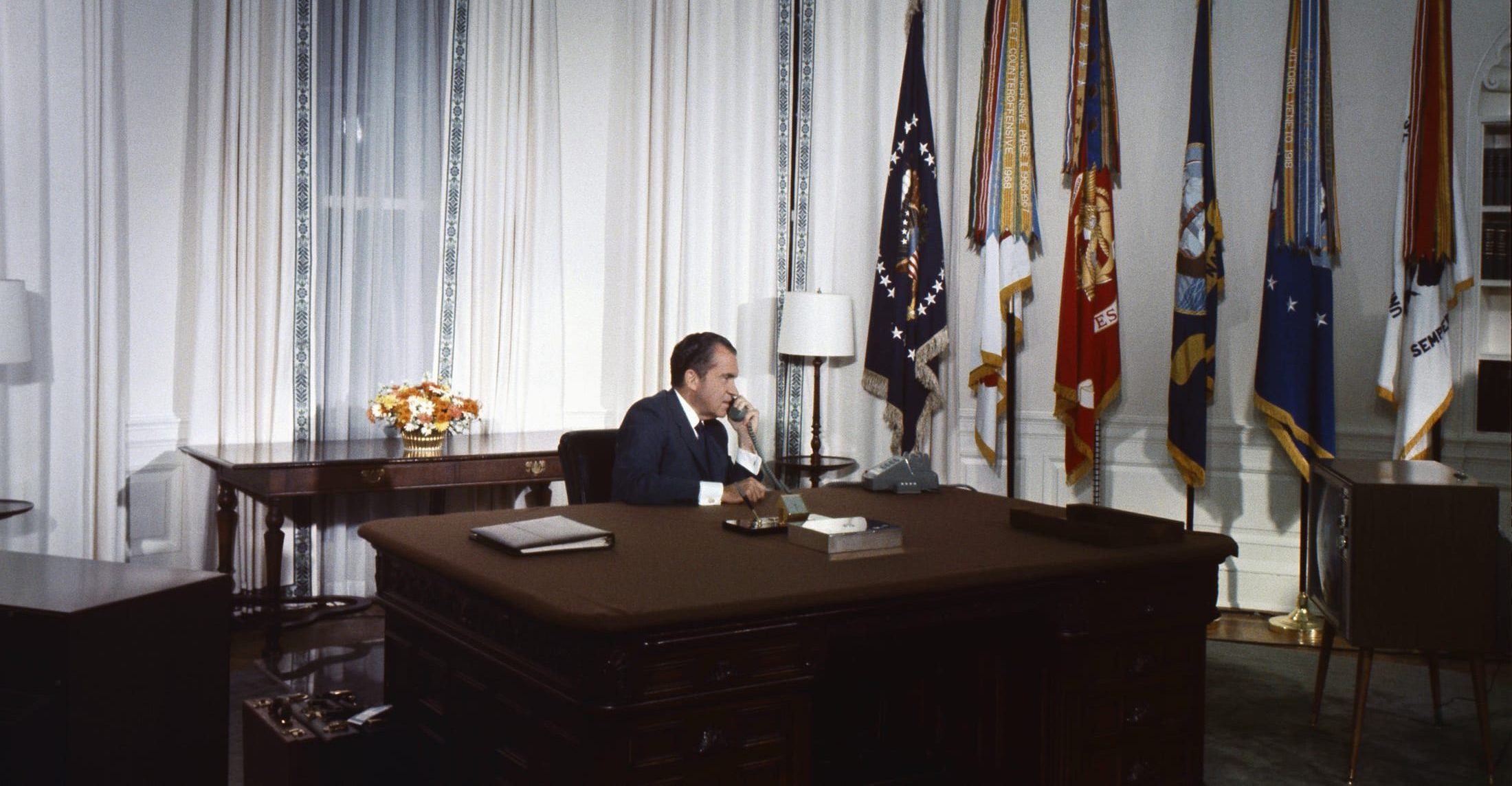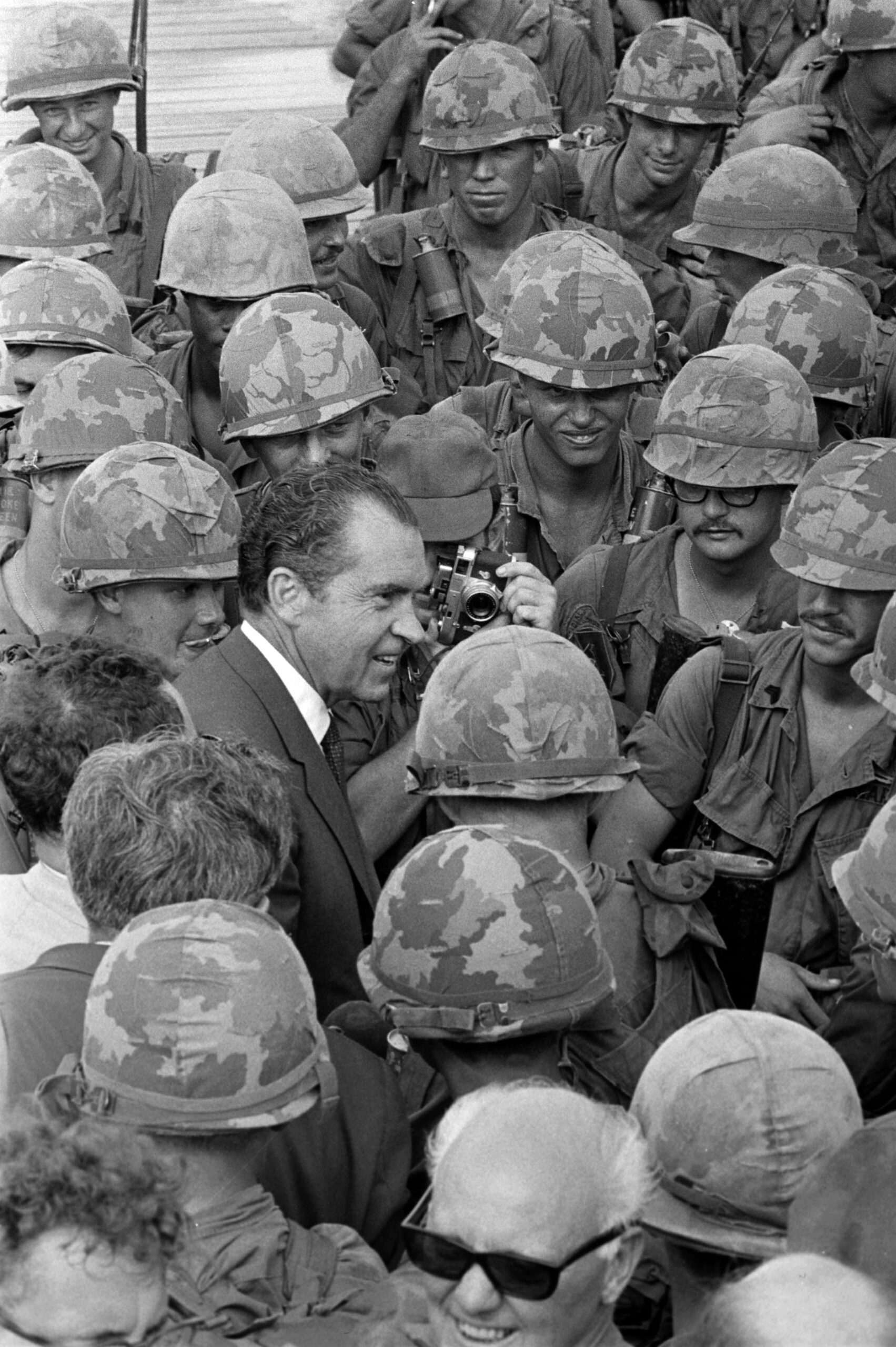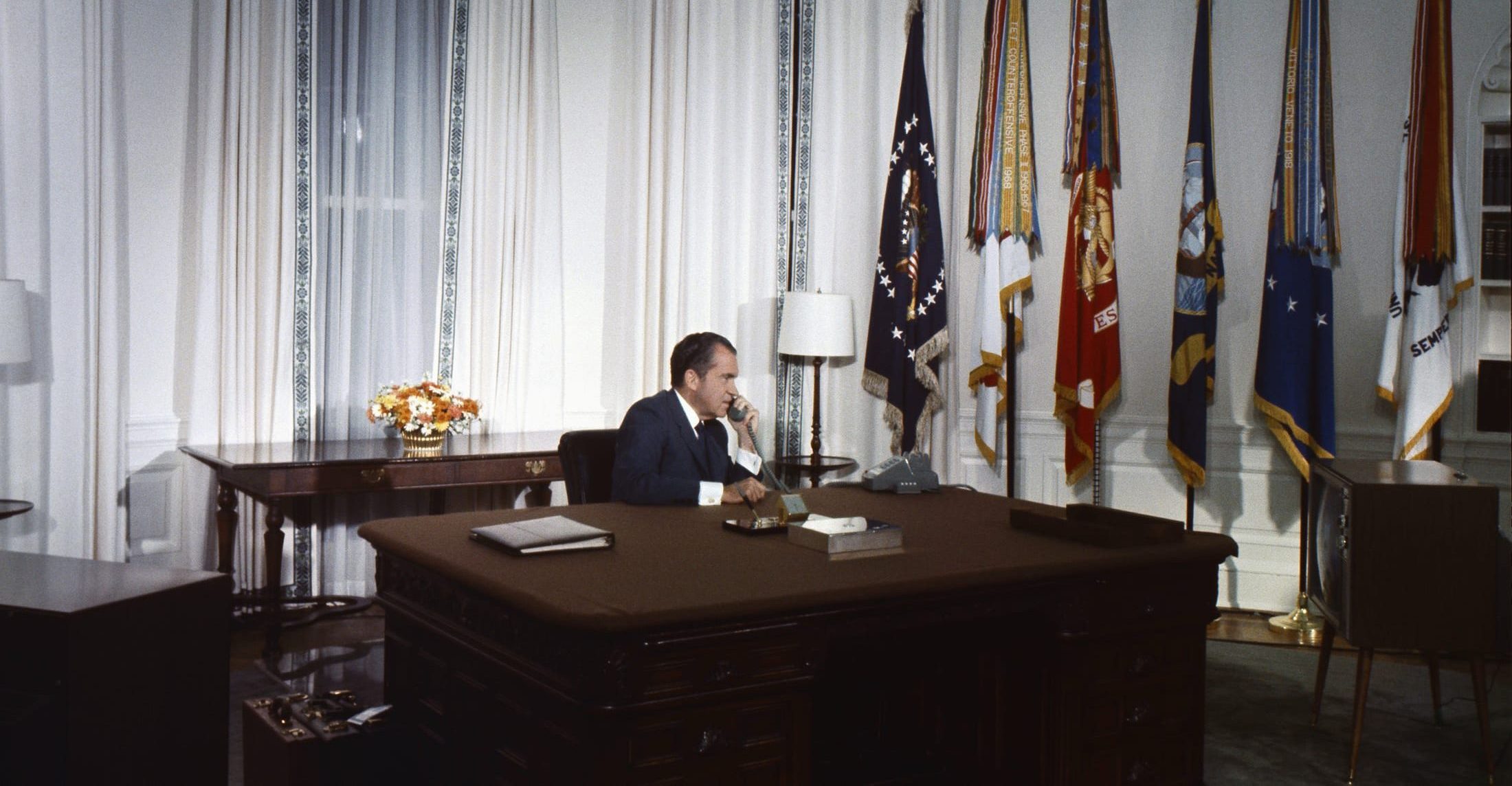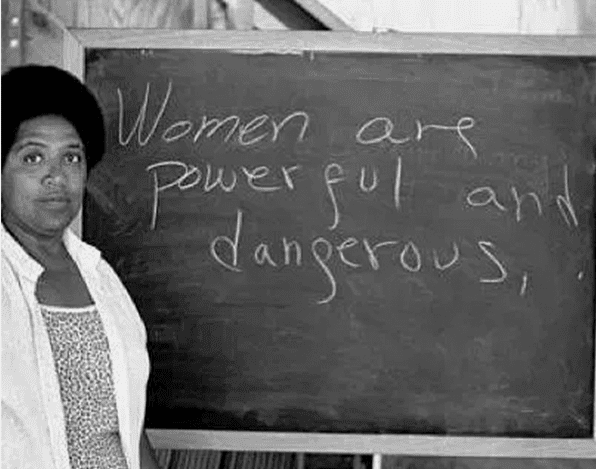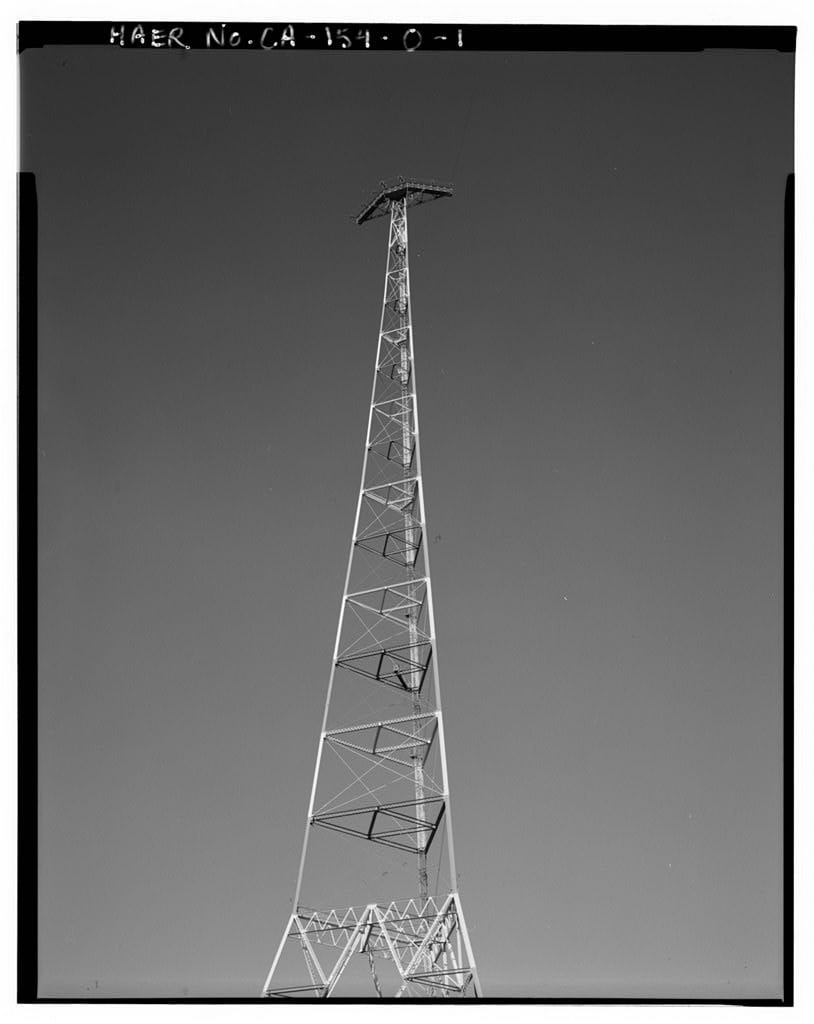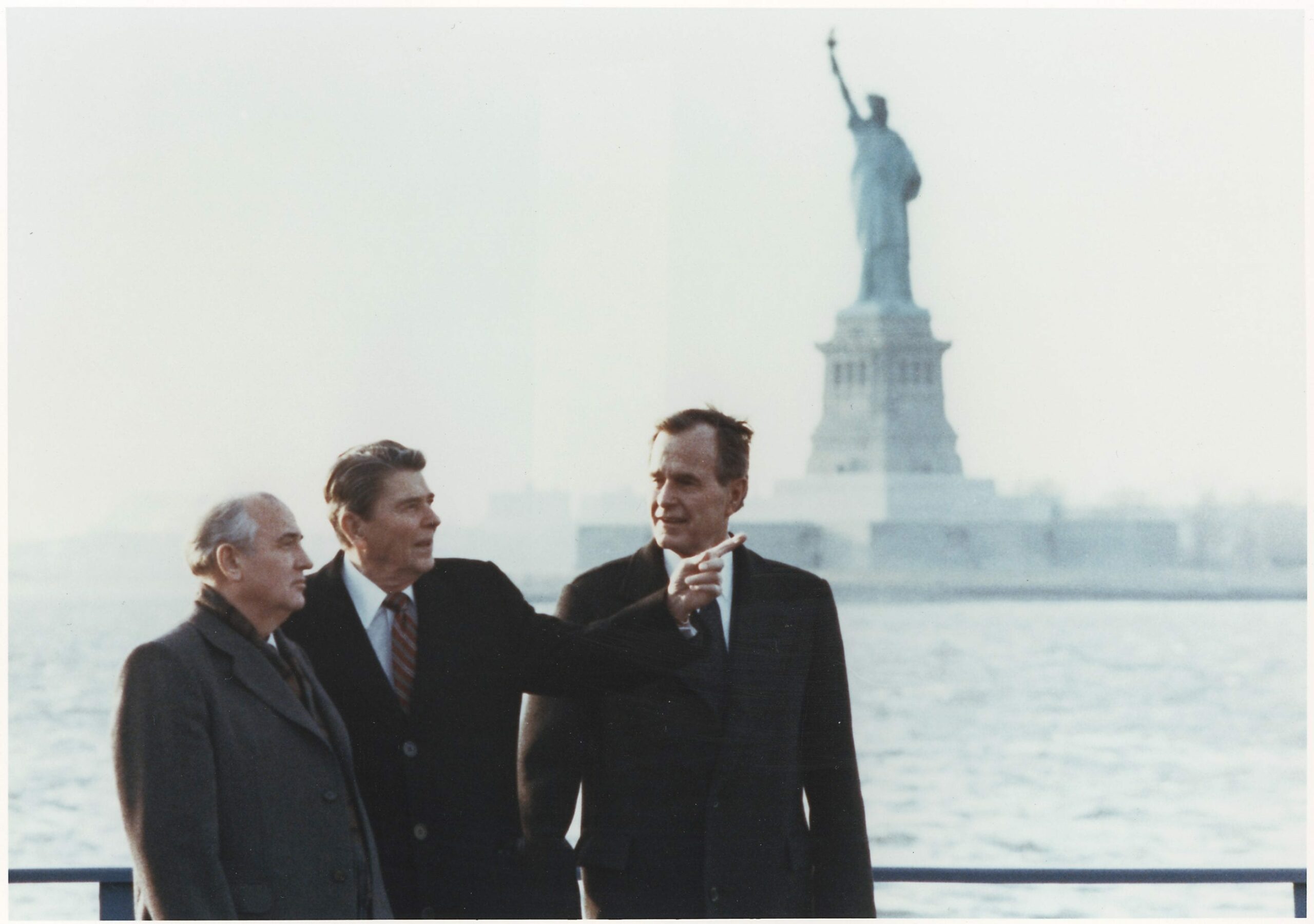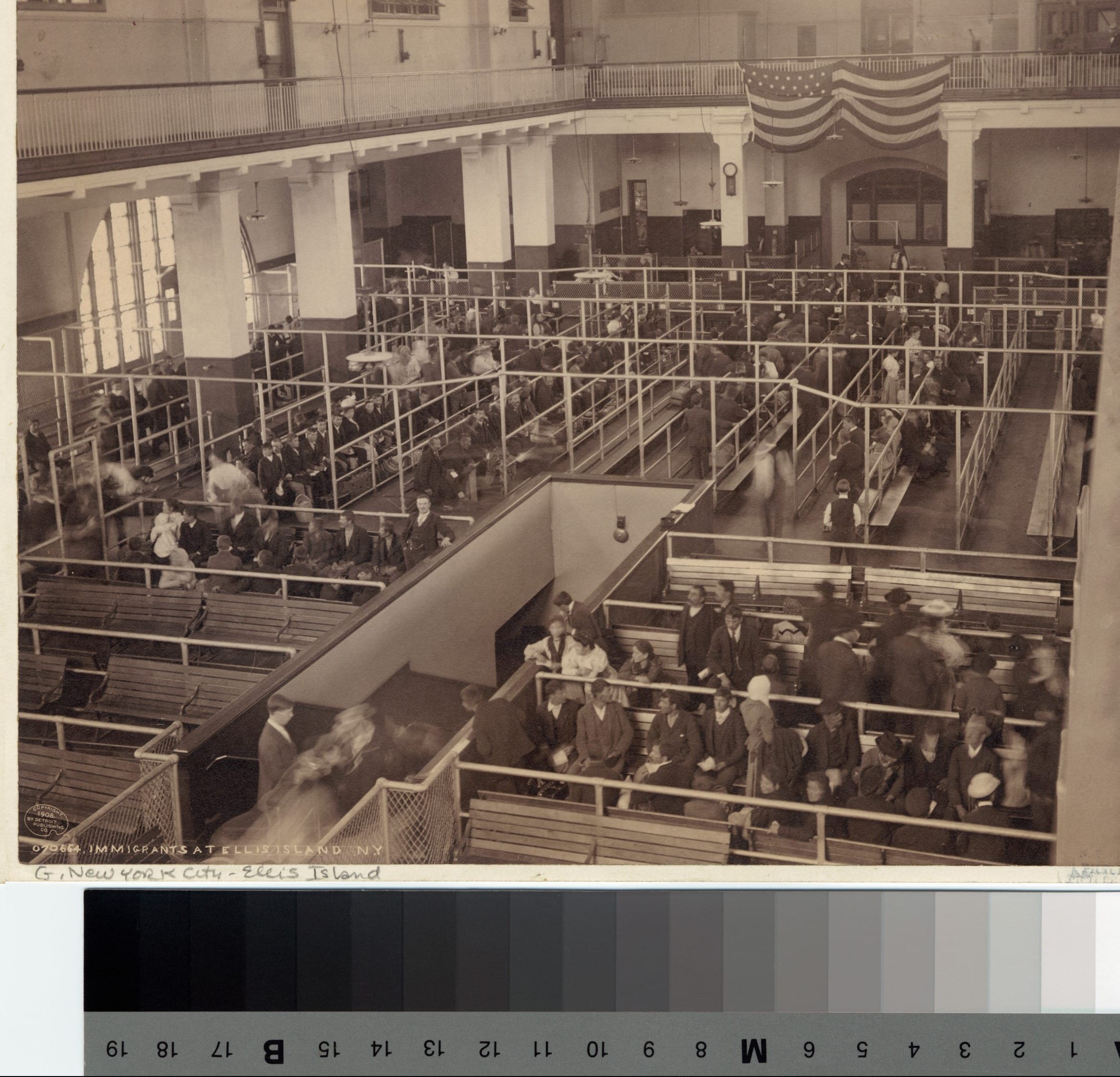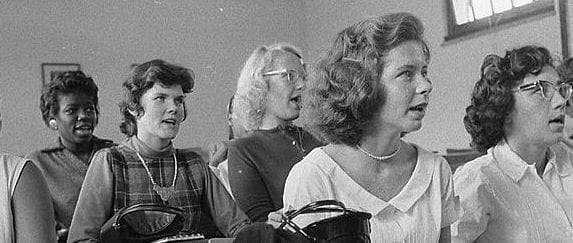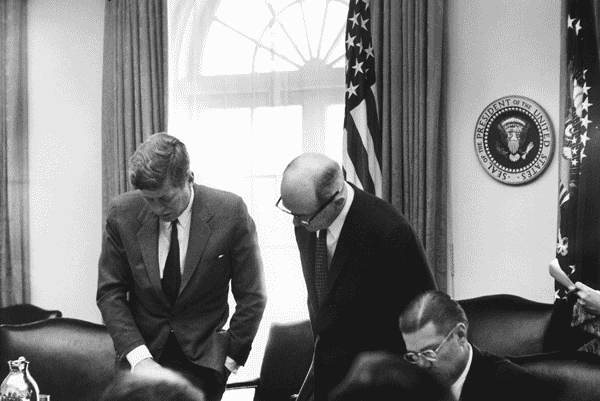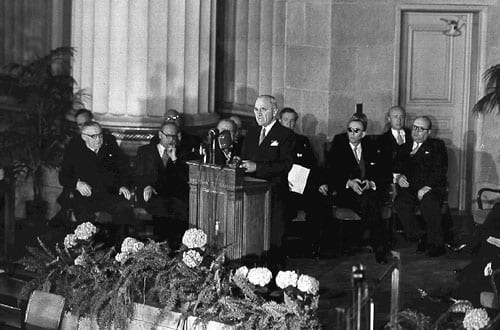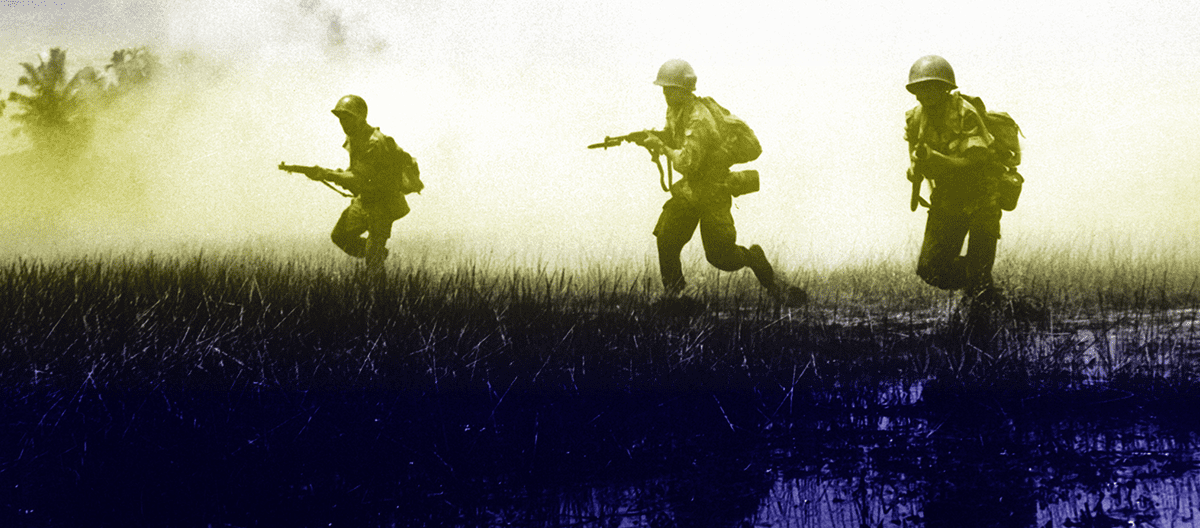
Introduction
In 1967, Secretary of War Robert McNamara commissioned a classified report titled “History of U.S. Decision-Making Process on Viet Nam Policy,” which became known as the Pentagon Papers. The publication of this secret study was at issue in the landmark case of New York Times v. United States. Among other things, the seven-thousand-page report revealed that American leaders had misled the country about from the beginning of the escalation in 1965. The classified documents were photocopied and leaked illegally to the press by Daniel Ellsberg, who worked for the Defense Department. In June 1971, the New York Times and the Washington Post began publishing installments.
The government invoked the Espionage Act (1917), which is still on the books, against both newspapers, maintaining that publication would irreparably injure national security.. In response, the newspapers argued that although the documents were classified, they dealt with past events, not current problems. As a historical record, they no longer posed an imminent threat to national security and should therefore be disclosed in the greater public interest. The Nixon administration sought a stay. Further installments of the Pentagon Papers were halted while the two cases made their way to the Supreme Court, one through an appeals court in New York, the other through an appeals court in the District of Columbia. Deciding quickly through a per curiam opinion, the Court struck down the stay as an illegal prior restraint in violation of a long-standing tradition that prohibits the censorship of material before publication. (“Per curiam” is Latin for “by the Court” and is an unsigned, often short, collective statement.) In addition to the per curiam opinion, the case included six concurring opinions and three dissenting ones, several of which are included in this excerpt. Justice Black’s concurring opinion is particularly noteworthy in providing a historical overview of the Founders on freedom of the press.
Source: 403 U.S. 713, https://www.law.cornell.edu/supremecourt/text/403/713.
PER CURIAM
We granted certiorari[1] in these cases in which the United States seeks to enjoin the New York Times and the Washington Post from publishing the contents of a classified study entitled “History of U.S. Decision-Making Process on Viet Nam Policy.”
“Any system of prior restraints of expression comes to this Court bearing a heavy presumption against its constitutional validity” (Bantam Books, Inc. v. Sullivan, 1963); see also Near v. Minnesota, 1931).[2] The government “thus carries a heavy burden of showing justification for the imposition of such a restraint” (Organization for a Better Austin v. Keefe, 1971). The District Court for the Southern District of New York, in the New York Times case, and the District Court for the District of Columbia and the Court of Appeals for the District of Columbia Circuit, in the Washington Post case, held that the government had not met that burden. We agree. . . .
. . . The stays entered June 25, 1971, by the Court are vacated. The judgments shall issue forthwith.
So ordered.
. . . MR. JUSTICE BLACK, with whom MR. JUSTICE DOUGLAS joins, concurring.
I adhere to the view that the government’s case against the Washington Post should have been dismissed, and that the injunction against the New York Times should have been vacated without oral argument when the cases were first presented to this Court. I believe that every moment’s continuance of the injunctions against these newspapers amounts to a flagrant, indefensible, and continuing violation of the First Amendment. . . . In my view, it is unfortunate that some of my Brethren are apparently willing to hold that the publication of news may sometimes be enjoined. Such a holding would make a shambles of the First Amendment.
Our government was launched in 1789 with the adoption of the Constitution. The Bill of Rights, including the First Amendment, followed in 1791. Now, for the first time in the 182 years since the founding of the Republic, the federal courts are asked to hold that the First Amendment does not mean what it says, but rather means that the government can halt the publication of current news of vital importance to the people of this country.
In seeking injunctions against these newspapers, and in its presentation to the Court, the Executive branch seems to have forgotten the essential purpose and history of the First Amendment. When the Constitution was adopted, many people strongly opposed it because the document contained no Bill of Rights to safeguard certain basic freedoms. They especially feared that the new powers granted to a central government might be interpreted to permit the government to curtail freedom of religion, press, assembly, and speech. In response to an overwhelming public clamor, James Madison offered a series of amendments to satisfy citizens that these great liberties would remain safe and beyond the power of government to abridge. Madison proposed what later became the First Amendment in three parts, two of which are set out below, and one of which proclaimed: “The people shall not be deprived or abridged of their right to speak, to write, or to publish their sentiments, and the freedom of the press, as one of the great bulwarks of liberty, shall be inviolable.” The amendments were offered to curtail and restrict the general powers granted to the Executive, Legislative, and Judicial branches two years before in the original Constitution. The Bill of Rights changed the original Constitution into a new charter under which no branch of government could abridge the people’s freedoms of press, speech, religion, and assembly. Yet the solicitor general argues and some members of the Court appear to agree that the general powers of the government adopted in the original Constitution should be interpreted to limit and restrict the specific and emphatic guarantees of the Bill of Rights adopted later. I can imagine no greater perversion of history. . . .
In the First Amendment, the Founding Fathers gave the free press the protection it must have to fulfill its essential role in our democracy. The press was to serve the governed, not the governors. The government’s power to censor the press was abolished so that the press would remain forever free to censure the government. The press was protected so that it could bare the secrets of government and inform the people. Only a free and unrestrained press can effectively expose deception in government. And paramount among the responsibilities of a free press is the duty to prevent any part of the government from deceiving the people and sending them off to distant lands to die of foreign fevers and foreign shot and shell. In my view, far from deserving condemnation for their courageous reporting, the New York Times, the Washington Post, and other newspapers should be commended for serving the purpose that the Founding Fathers saw so clearly. In revealing the workings of government that led to the Vietnam War, the newspapers nobly did precisely that which the Founders hoped and trusted they would do. . . .
In other words, we are asked to hold that, despite the First Amendment’s emphatic command, the Executive branch, the Congress, and the Judiciary can make laws enjoining publication of current news and abridging freedom of the press in the name of “national security.” The government does not even attempt to rely on any act of Congress. Instead, it makes the bold and dangerously far-reaching contention that the courts should take it upon themselves to “make” a law abridging freedom of the press in the name of equity, presidential power, and national security, even when the representatives of the people in Congress have adhered to the command of the First Amendment and refused to make such a law. . . . To find that the president has “inherent power” to halt the publication of news by resort to the courts would wipe out the First Amendment and destroy the fundamental liberty and security of the very people the government hopes to make “secure.” No one can read the history of the adoption of the First Amendment without being convinced beyond any doubt that it was injunctions like those sought here that Madison and his collaborators intended to outlaw in this nation for all time.
The word “security” is a broad, vague generality whose contours should not be invoked to abrogate the fundamental law embodied in the First Amendment. The guarding of military and diplomatic secrets at the expense of informed representative government provides no real security for our republic. The framers of the First Amendment, fully aware of both the need to defend a new nation and the abuses of the English and colonial governments, sought to give this new society strength and security by providing that freedom of speech, press, religion, and assembly should not be abridged. . . .
The stays in these cases that have been in effect for more than a week constitute a flouting of the principles of the First Amendment as interpreted in Near v. Minnesota.
- JUSTICE WHITE, with whom MR. JUSTICE STEWART joins, concurring.
I concur in today’s judgments, but only because of the concededly extraordinary protection against prior restraints enjoyed by the press under our constitutional system. I do not say that in no circumstances would the First Amendment permit an injunction against publishing information about government plans or operations. Nor, after examining the materials the government characterizes as the most sensitive and destructive, can I deny that revelation of these documents will do substantial damage to public interests. Indeed, I am confident that their disclosure will have that result. But I nevertheless agree that the United States has not satisfied the very heavy burden that it must meet to warrant an injunction against publication in these cases, at least in the absence of express and appropriately limited congressional authorization for prior restraints in circumstances such as these.
The government’s position is simply stated: the responsibility of the Executive for the conduct of the foreign affairs and for the security of the nation is so basic that the president is entitled to an injunction against publication of a newspaper story whenever he can convince a court that the information to be revealed threatens “grave and irreparable” injury to the public interest; and the injunction should issue whether or not the material to be published is classified, whether or not publication would be lawful under relevant criminal statutes enacted by Congress, and regardless of the circumstances by which the newspaper came into possession of the information.
At least in the absence of legislation by Congress, based on its own investigations and findings, I am quite unable to agree that the inherent powers of the Executive and the courts reach so far as to authorize remedies having such sweeping potential for inhibiting publications by the press. Much of the difficulty inheres in the “grave and irreparable danger” standard suggested by the United States. . . . To sustain the government in these cases would start the courts down a long and hazardous road that I am not willing to travel, at least without congressional guidance and direction. . . .
- JUSTICE MARSHALL, concurring.
The government contends that the only issue in these cases is whether, in a suit by the United States, “the First Amendment bars a court from prohibiting a newspaper from publishing material whose disclosure would pose a ‘grave and immediate danger to the security of the United States.’ ” With all due respect, I believe the ultimate issue in these cases is even more basic than the one posed by the solicitor general. The issue is whether this Court or the Congress has the power to make law. . . .
The problem here is whether, in these particular cases, the Executive branch has authority to invoke the equity jurisdiction of the courts to protect what it believes to be the national interest. See In re Debs (1895). The government argues that, in addition to the inherent power of any government to protect itself, the president’s power to conduct foreign affairs and his position as commander in chief give him authority to impose censorship on the press to protect his ability to deal effectively with foreign nations and to conduct the military affairs of the country. Of course, it is beyond cavil that the president has broad powers by virtue of his primary responsibility for the conduct of our foreign affairs and his position as commander in chief (Chicago & Southern Air Lines v. Waterman S.S. Corp., 1948; Hirabayashi v. United States, 1943; United States v. Curtiss Wright Corp., 1936). And, in some situations, it may be that, under whatever inherent powers the government may have, as well as the implicit authority derived from the president’s mandate to conduct foreign affairs and to act as commander in chief, there is a basis for the invocation of the equity jurisdiction of this Court as an aid to prevent the publication of material damaging to “national security,” however that term may be defined.
It would, however, be utterly inconsistent with the concept of separation of powers for this Court to use its power of contempt to prevent behavior that Congress has specifically declined to prohibit. There would be a similar damage to the basic concept of these co-equal branches of government if, when the Executive branch has adequate authority granted by Congress to protect “national security,” it can choose, instead, to invoke the contempt power of a court to enjoin the threatened conduct. The Constitution provides that Congress shall make laws, the president execute laws, and courts interpret laws (Youngstown Sheet & Tube Co. v. Sawyer, 1952). It did not provide for government by injunction in which the courts and the Executive branch can “make law” without regard to the action of Congress. It may be more convenient for the Executive branch if it need only convince a judge to prohibit conduct, rather than ask the Congress to pass a law, and it may be more convenient to enforce a contempt order than to seek a criminal conviction in a jury trial. Moreover, it may be considered politically wise to get a court to share the responsibility for arresting those who the Executive branch has probable cause to believe are violating the law. But convenience and political considerations of the moment do not justify a basic departure from the principles of our system of government. . . .
CHIEF JUSTICE BURGER, dissenting.
So clear are the constitutional limitations on prior restraint against expression that, from the time of Near v. Minnesota (1931)[3] until recently in Organization for a Better Austin v. Keefe (1971), we have had little occasion to be concerned with cases involving prior restraints against news reporting on matters of public interest. There is, therefore, little variation among the members of the Court in terms of resistance to prior restraints against publication. Adherence to this basic constitutional principle, however, does not make these cases simple. In these cases, the imperative of a free and unfettered press comes into collision with another imperative, the effective functioning of a complex modern government, and, specifically, the effective exercise of certain constitutional powers of the Executive. Only those who view the First Amendment as an absolute in all circumstances—a view I respect but reject—can find such cases as these to be simple or easy.
These cases are not simple for another and more immediate reason. We do not know the facts of the cases. No district judge knew all the facts. No court of appeals judge knew all the facts. No member of this Court knows all the facts.
Why are we in this posture, in which only those judges to whom the First Amendment is absolute and permits of no restraint in any circumstances or for any reason, are really in a position to act?
I suggest we are in this posture because these cases have been conducted in unseemly haste. . . . The prompt setting of these cases reflects our universal abhorrence of prior restraint. But prompt judicial action does not mean unjudicial haste.
Here, moreover, the frenetic haste is due in large part to the manner in which the Times proceeded from the date it obtained the purloined documents. It seems reasonably clear now that the haste precluded reasonable and deliberate judicial treatment of these cases, and was not warranted. The precipitate action of this Court aborting trials not yet completed is not the kind of judicial conduct that ought to attend the disposition of a great issue.
The newspapers make a derivative claim under the First Amendment; they denominate this right as the public “right to know”; by implication, the Times asserts a sole trusteeship of that right by virtue of its journalistic “scoop.” The right is asserted as an absolute. Of course, the First Amendment right itself is not an absolute, as Justice Holmes so long ago pointed out in his aphorism concerning the right to shout “fire” in a crowded theater if there was no fire. There are other exceptions, some of which Chief Justice Hughes mentioned by way of example in Near v. Minnesota. There are no doubt other exceptions no one has had occasion to describe or discuss. Conceivably, such exceptions may be lurking in these cases and would have been flushed had they been properly considered in the trial courts, free from unwarranted deadlines and frenetic pressures. An issue of this importance should be tried and heard in a judicial atmosphere conducive to thoughtful, reflective deliberation, especially when haste, in terms of hours, is unwarranted in light of the long period the Times, by its own choice, deferred publication. . . .
JUSTICE BLACKMUN, dissenting.
. . . The First Amendment, after all, is only one part of an entire Constitution. Article II of the great document vests in the Executive branch primary power over the conduct of foreign affairs, and places in that branch the responsibility for the nation’s safety. Each provision of the Constitution is important, and I cannot subscribe to a doctrine of unlimited absolutism for the First Amendment at the cost of downgrading other provisions. First Amendment absolutism has never commanded a majority of this Court. What is needed here is a weighing, upon properly developed standards, of the broad right of the press to print and of the very narrow right of the government to prevent. Such standards are not yet developed. The parties here are in disagreement as to what those standards should be. . . .
I strongly urge, and sincerely hope, that these two newspapers will be fully aware of their ultimate responsibilities to the United States of America. Judge Wilkey, dissenting in the District of Columbia case, after a review of only the affidavits before his court (the basic papers had not then been made available by either party), concluded that there were a number of examples of documents that, if in the possession of the Post and if published, “could clearly result in great harm to the nation,” and he defined “harm” to mean “the death of soldiers, the destruction of alliances, the greatly increased difficulty of negotiation with our enemies, the inability of our diplomats to negotiate.”
I, for one, have now been able to give at least some cursory study not only to the affidavits, but to the material itself. I regret to say that, from this examination, I fear that Judge Wilkey’s statements have possible foundation. I therefore share his concern.

Conversation-based seminars for collegial PD, one-day and multi-day seminars, graduate credit seminars (MA degree), online and in-person.

